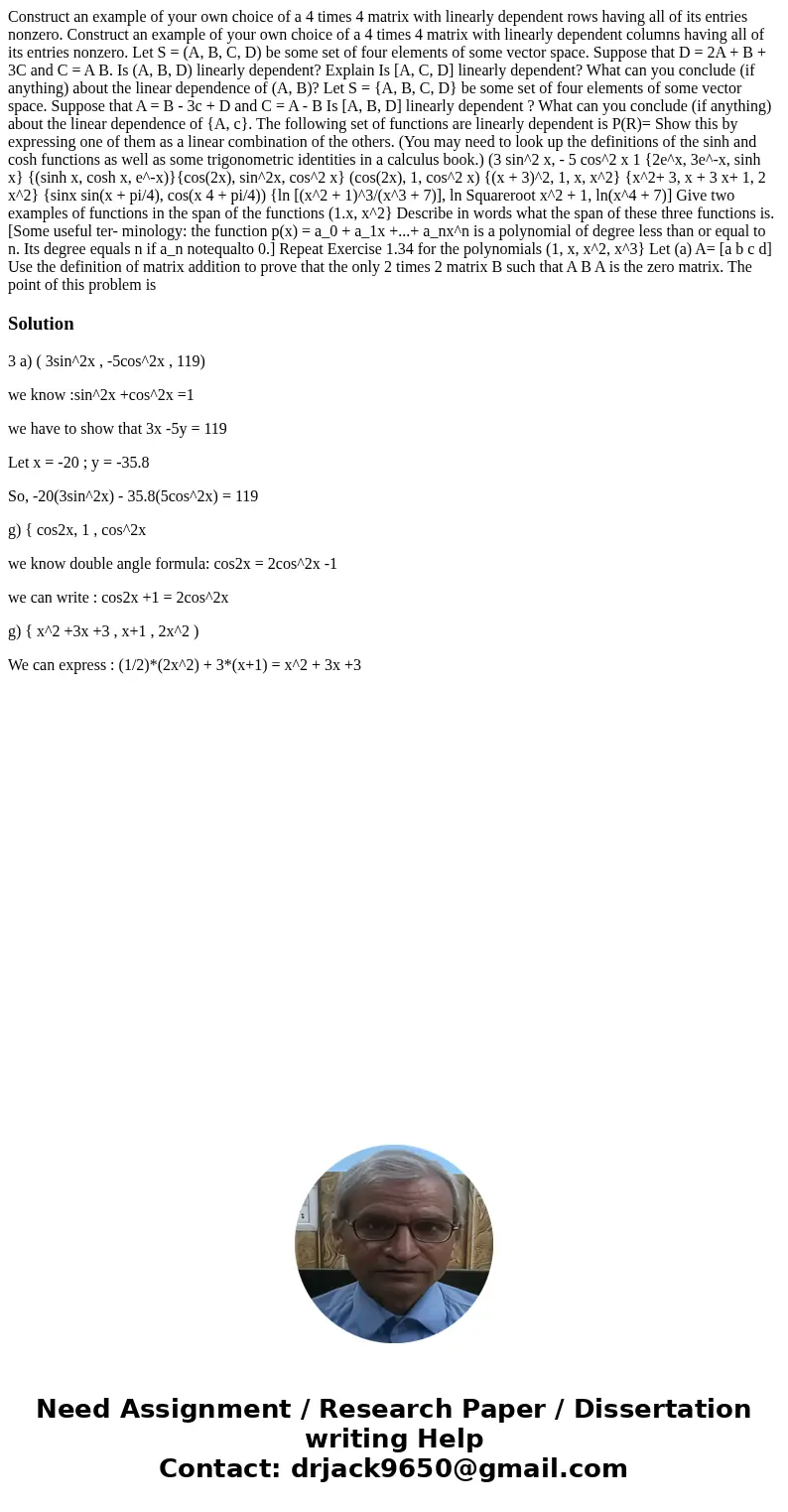Construct an example of your own choice of a 4 times 4 matri
Construct an example of your own choice of a 4 times 4 matrix with linearly dependent rows having all of its entries nonzero. Construct an example of your own choice of a 4 times 4 matrix with linearly dependent columns having all of its entries nonzero. Let S = (A, B, C, D) be some set of four elements of some vector space. Suppose that D = 2A + B + 3C and C = A B. Is (A, B, D) linearly dependent? Explain Is [A, C, D] linearly dependent? What can you conclude (if anything) about the linear dependence of (A, B)? Let S = {A, B, C, D} be some set of four elements of some vector space. Suppose that A = B - 3c + D and C = A - B Is [A, B, D] linearly dependent ? What can you conclude (if anything) about the linear dependence of {A, c}. The following set of functions are linearly dependent is P(R)= Show this by expressing one of them as a linear combination of the others. (You may need to look up the definitions of the sinh and cosh functions as well as some trigonometric identities in a calculus book.) (3 sin^2 x, - 5 cos^2 x 1 {2e^x, 3e^-x, sinh x} {(sinh x, cosh x, e^-x)}{cos(2x), sin^2x, cos^2 x} (cos(2x), 1, cos^2 x) {(x + 3)^2, 1, x, x^2} {x^2+ 3, x + 3 x+ 1, 2 x^2} {sinx sin(x + pi/4), cos(x 4 + pi/4)) {ln [(x^2 + 1)^3/(x^3 + 7)], ln Squareroot x^2 + 1, ln(x^4 + 7)] Give two examples of functions in the span of the functions (1.x, x^2} Describe in words what the span of these three functions is. [Some useful ter- minology: the function p(x) = a_0 + a_1x +...+ a_nx^n is a polynomial of degree less than or equal to n. Its degree equals n if a_n notequalto 0.] Repeat Exercise 1.34 for the polynomials (1, x, x^2, x^3} Let (a) A= [a b c d] Use the definition of matrix addition to prove that the only 2 times 2 matrix B such that A B A is the zero matrix. The point of this problem is 
Solution
3 a) ( 3sin^2x , -5cos^2x , 119)
we know :sin^2x +cos^2x =1
we have to show that 3x -5y = 119
Let x = -20 ; y = -35.8
So, -20(3sin^2x) - 35.8(5cos^2x) = 119
g) { cos2x, 1 , cos^2x
we know double angle formula: cos2x = 2cos^2x -1
we can write : cos2x +1 = 2cos^2x
g) { x^2 +3x +3 , x+1 , 2x^2 )
We can express : (1/2)*(2x^2) + 3*(x+1) = x^2 + 3x +3

 Homework Sourse
Homework Sourse